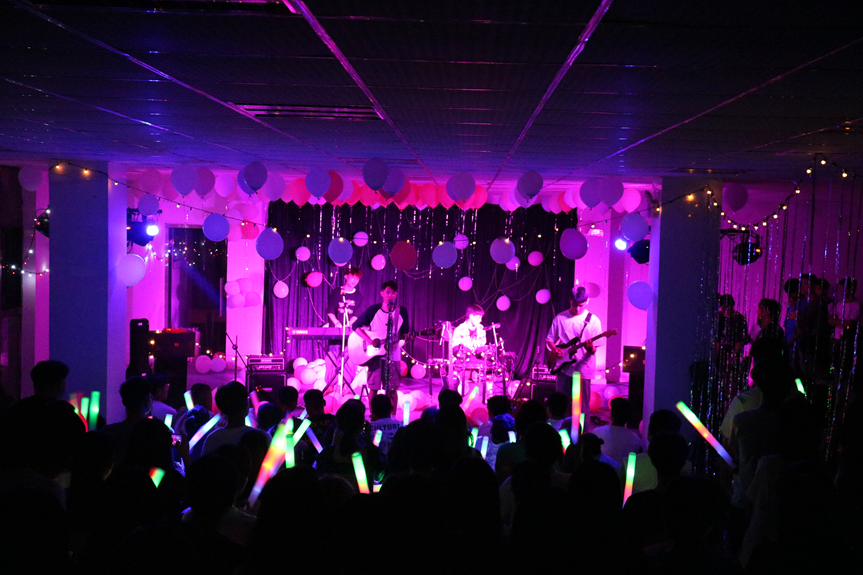Stage design is undergoing a quiet revolution — one that appeals not just to the eyes and ears, but to the entire sensory spectrum. In a world where audience attention is fragmented and digital fatigue is real, immersive experiences are emerging as the most powerful way to engage. At the core of this transformation is the idea of multisensory synchronization — shows where light, smell, and sound converge in orchestrated harmony.

Beyond Sight and Sound: Why Smell Matters
Historically, light and sound have been the two dominant tools in live performances. However, the sense of smell accesses emotional memory centers in the brain faster and more deeply than sight or hearing. Introducing scent into live shows:
Enhances mood immersion (e.g., lavender for calm, citrus for energy)
Reinforces narrative settings (e.g., pine for forest, smoke for battlefields)
Anchors experiences in memory for long-term impact
Research shows that scent-augmented experiences are recalled 2–3 times more vividly than those using visuals or audio alone.
How Synchronized Multisensory Shows Work
At the technical level, multisensory performances require precise coordination between independent systems. A typical setup might include:
DMX lighting system for color, pattern, movement
Multichannel audio playback with spatial routing
Scent dispersal units triggered via MIDI, timecode, or show control software
Environmental sensors for audience positioning or interaction
Centralized cueing systems to synchronize all outputs per scene
To function seamlessly, every component must follow a unified timeline, whether it's embedded in a media server, lighting console, or standalone cue software.
Key Design Considerations
Creating impactful multisensory shows goes far beyond layering effects. It demands intentionality and sensitivity in how each sense is addressed. Some important principles include:
Subtlety over overload: Avoid overwhelming audiences with intensity
Thematic cohesion: Light colors, music tones, and smells should share emotional direction
Rhythmic entrainment: Align scent dispersal with musical phrasing or lighting pulses
Ventilation control: Ensure scent diffusion is targeted and dissipates effectively between scenes
Cultural context: Be aware of scent meanings across different audience demographics
An audience might forgive a loud strobe, but an overpowering fragrance can quickly become a distraction or discomfort if not handled with nuance.
Applications Across Industries
| Industry / Use Case | Application of Multisensory Integration |
|---|---|
| Live concerts | Scent pulses during emotional choruses or beat drops |
| Theatrical productions | Scene-setting aromas (e.g., ocean, leather, rain) |
| Museums & exhibitions | Enhance timeline-based walk-throughs with contextual smells |
| Themed retail & pop-up spaces | Encourage dwell time and emotional resonance |
| Wellness and meditation events | Reinforce calm via synchronized lighting and essential oils |
These performances can even adapt dynamically — responding to crowd motion, live instruments, or real-time triggers to shift the sensory profile on the fly.
Challenges and Future Outlook
Despite the appeal, there are hurdles to widespread adoption:
Standardization: Few universal protocols exist for scent device control
Audience variability: Scent preferences and tolerances vary dramatically
Cost and logistics: Precise scent dispersal requires HVAC planning, zoning, and refills
Accessibility: Some individuals may have scent sensitivities or allergies
That said, as olfactory hardware becomes smaller, quieter, and more programmable, we are moving closer to seamless integration. Open protocols like OSC and Art-Net may soon accommodate smell-based cues just like lighting or sound.
Conclusion
Synchronized multisensory shows represent a leap forward in how we tell stories and craft live experiences. By integrating light, smell, and sound, creators tap into deeper emotional channels — engaging memory, imagination, and the nervous system in concert.
The future of performance design will be measured not just in decibels and lumens, but in subtle fragrances, atmospheric rhythm, and the immersive interplay of all five senses.
READ MORE:





Blue Sea Lighting is an enterprise with rich experience in the integration of industry and trade in stage lighting and stage special effects related equipment. Its products include moving head lights, par lights, wall washer lights, logo gobo projector lights, power distributor, stage effects such as electronic fireworks machines, snow machines, smoke bubble machines, and related accessories such as light clamps.
Quick Links
For more questions subscribe to our email








